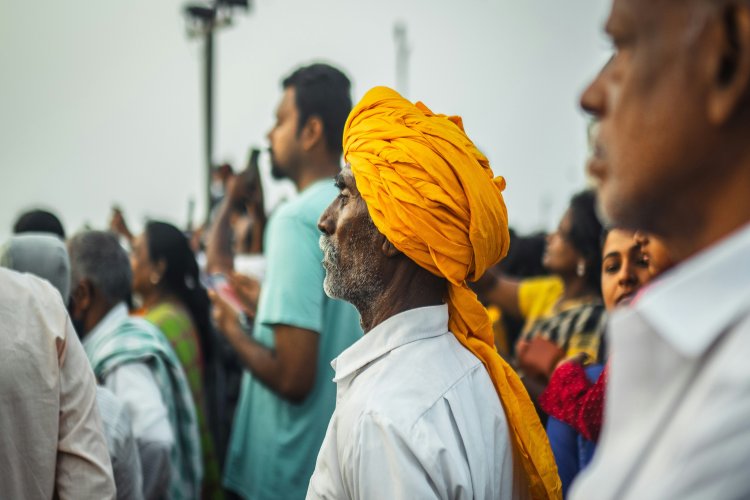
On April 30, 2025 the Cabinet Committee on Political Affairs bowed to long-standing demands and agreed to include full caste enumeration in the delayed decadal Census. Karnataka has already resolved to complete a fresh socio-economic caste survey within three months, while Telangana is finalising the country’s first caste-based backwardness index built on 35 million individual records. These state initiatives showcase the promise of granular data.
Yet celebration must not mutate into complacency. A caste census will illuminate inequity, but light alone does not heal a wound. Unless Parliament, the executive and civil society translate fresh statistics into sustained affirmative action, enumeration will become another ritual of Indian administration—ink on paper, signifying little.
READ | Coding plenty: Charting sustainable abundance in the age of limits
Data without direction is an empty ledger
India has not gathered reliable nationwide caste data since 1931; the 2011 Socio-Economic and Caste Census was shelved because officials could not reconcile its inconsistencies. The consequence is visible in our public institutions. Only 4% of professors and 6% of associate professors in 45 central universities are from Other Backward Classes, while 85% belong to the general category—despite a 2019 law guaranteeing reservations in faculty posts. Numbers, or the lack of them, decide who teaches, who judges and who governs.
A national caste census can change that arithmetic, but only if it is paired with coherent institutions. First, the government must constitute a permanent social justice commission empowered to analyse census results and recommend time-bound corrective action across ministries. Next, line ministries need budgets that are explicitly linked to caste gaps in health, housing and education—a step that will force officials to confront inequity in every appropriation. Finally, every publicly funded university, public-sector enterprise and constitutional body should undergo an annual diversity audit whose findings are tabled in Parliament. Absent these mechanisms, data will remain an empty ledger—accurate perhaps, but inert.
Caste census to affirmative action
The Bihar survey showed that OBCs and Extremely Backward Classes together form more than 63 per cent of the state’s population, yet their share of college degrees is a paltry seven per cent. A similar chasm exists nationally: upper-caste Indians, barely a quarter of the population at most, still occupy the overwhelming majority of senior positions in the media, the judiciary and the IIT faculty. Such disparities mock the constitutional promise of equality.
Affirmative action therefore needs both protection and innovation. The Mandal formula of 27 per cent for OBCs, frozen in 1992, cannot remain sacrosanct if new data show that historically underserved groups far outnumber the benchmark. Likewise, Scheduled Caste sub-quotas must expand wherever evidence reveals extreme deprivation. Yet quotas on paper succeed only when matched by money on the table: ministries must reserve a defined share of their capital budgets for schools, clinics, broadband and skilling programmes in districts identified as caste-dense and service-poor. The Finance Commission should be asked to recommend a “Caste Gap Grant”, ring-fencing funds to narrow disparities exposed by the census.
Beyond reservations: new instruments of equity
Reservations served their purpose when the state was the principal employer; today the public sector creates barely five per cent of new jobs. If social justice is to survive the shrinkage of sarkari employment, policy must reach into markets the state does not directly control.
One avenue is public procurement. Any company that bids for a sizeable government contract should publish its caste diversity figures and commit to time-bound hiring targets. A second lies in credit policy. Public-sector banks can reduce collateral requirements for first-generation Dalit or Adivasi entrepreneurs and offer interest rebates to firms that achieve verifiable caste diversity in their payrolls. The third is education finance. Scholarship schemes must follow students from middle school to postgraduate research, providing guaranteed rungs on an academic ladder that poor families can trust—conditional on retention and achievement so that merit is preserved even as opportunity widens.
These measures extend the spirit of reservation—equalising opportunity—into spheres where the state is regulator or financier rather than employer.
Transparency, accountability and civil society
Enumerating caste is also an exercise in democratic oversight. When disaggregated data are placed in the public domain, citizens can verify whether houses, taps or skill certificates genuinely reach those who need them most. District-level dashboards will allow journalists to expose how elite sub-groups sometimes monopolise benefits intended for the truly disadvantaged.
Transparency, however, demands strong safeguards. Privacy must be protected through anonymised datasets; misclassification disputes require swift adjudication by a quasi-judicial tribunal; and political parties must be legally prohibited from using raw caste data for micro-targeted campaigning. Without such guardrails, enumeration could degenerate into another battlefield of competitive populism.
From enumeration to emancipation
Dr BR Ambedkar warned that caste is not merely an economic handicap but a “state of mind”. A census may record the external manifestation of that state, yet it cannot by itself dismantle prejudice. For that we need relentless affirmative action, fresh financial muscle and uncompromising transparency.
The government’s decision to count caste is therefore only the prologue. The chapters that follow must chronicle expanded scholarships, recalibrated quotas, inclusive procurement, caste-gap grants and annual diversity audits. When future historians judge whether the census of the 2020s changed India, they will not pore over tables; they will ask whether Dalit women found safe work, whether Adivasi children finished college and whether an OBC academic became Vice-Chancellor without first fighting a court case.
Caste data can either gather dust in North Block or ignite a quiet revolution in policy. Counting is necessary—acting is indispensable.
Dr Gurleen Kaur teaches at Department of Economics, Sri Guru Gobind Singh College of Commerce, University of Delhi. Dr Supriya Chopra is a lecturer at York University, Toronto.
